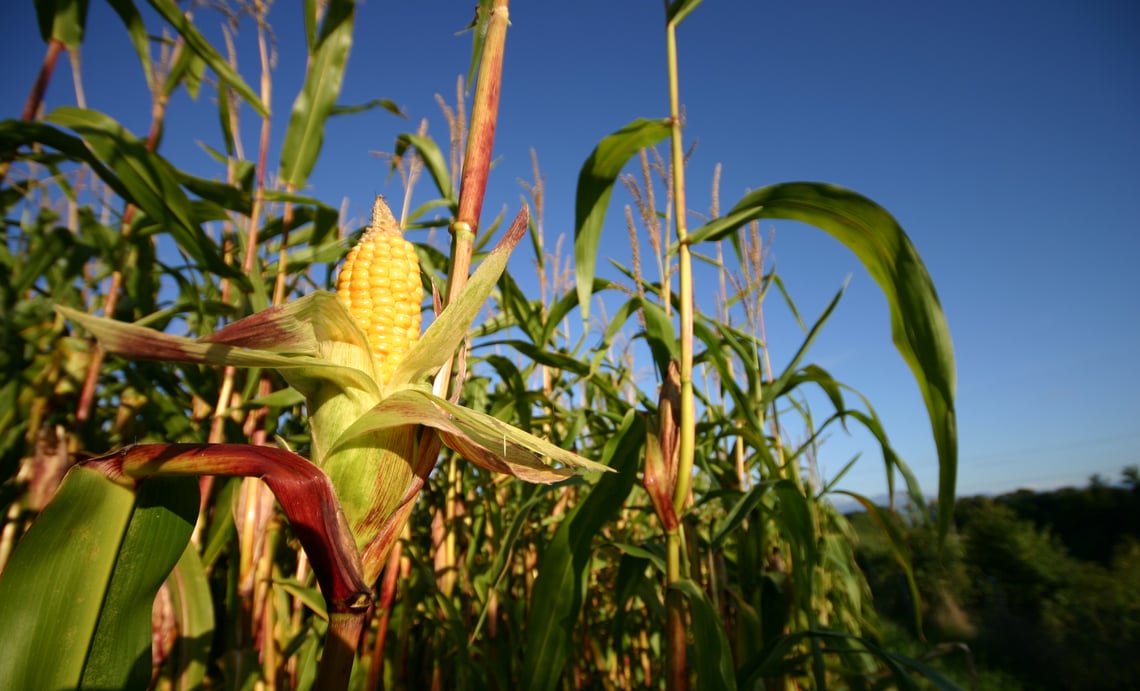‘Everything starts with soil:’ How our biggest ally in fighting climate change is sitting beneath our feet
October 06, 2020
On the surface, soil looks a lot like dirt. We can see the crops that grow from it, the farmland that sits on it, the livestock that graze from it.
We can’t see the vast and vibrant world just below — the microbes and fungi, the “upside-down forests” of root systems that would tower over us if they grew in the other direction. We can’t see the water that healthy soil naturally absorbs and protects.
And we can’t see the carbon, pulled from the atmosphere above in ways that make soil one of agriculture’s most powerful allies in counteracting climate change. If we manage and nurture it, the ground beneath our feet has the potential to sequester huge amounts of carbon every year.
“At Cargill, we know agriculture is how we’ll ensure a safe, responsible and sustainable food system,” said Ryan Sirolli, sustainability director for row crops. “The land is a farmer’s most valuable asset, and it all starts with healthy soil.”

10 million acres of regenerated cropland
Soil health is the foundation of regenerative agriculture — a broad system that encompasses managing cropland, restoring grasslands, rebuilding wildlife habitats and nurturing healthy ecosystems in ways that benefit farmers, agribusiness and the environment.
That starts with helping farmers protect and rejuvenate soil rather than wearing it out. As “the original environmentalists,” farmers and ranchers know their land is the key to their livelihoods and productivity.
Tilling, overuse and erosion all hurt the critical ecosystems that make soil so valuable. “There’s this whole living thing when you dig into soil, but as it gets degraded, you lose that,” Ryan said. “It can really become just dirt.”
Cargill has been helping farmers by providing market access and crop nutrition solutions in addition to helping them adopt practices and systems foundational to regenerative agriculture for a decade. Now, we’re supporting farmer-led efforts to advance the work on 10 million acres of cropland in North America by 2030.
Those practices include steps like reducing or eliminating tillage, optimizing fertilizers, rotating diverse crops, using cover crops and incorporating livestock grazing.
How much of a difference does it make? An acre of land that incorporates soil health practices can sequester half a ton or more carbon each year than an acre that doesn’t. Nine acres is the equivalent of taking a passenger car off the road. Ten million acres is about 1.1 million cars.
There are additional benefits for farmers, too. Healthy soil helps improves water quality. It can hold more water in times of drought. And it doesn’t wash away as easily in heavy rain or flooding. Investing in soil health is how agriculture can enhance farmer livelihoods while reducing greenhouse gas emissions.
“Farmers are stewards of the land, and therefore deeply understand the need to take care of it now and for the future,” said Sharon Spies, sustainability lead in Cargill’s North American agricultural supply chain business. “Cargill’s role is to help farmers both see the benefit of soil health practices and help them connect to programs that can support the transition.”
Cargill already has several efforts underway to support the 10 million acre initiative including:
- A collaboration with The Nature Conservancy, Target and McDonald’s through the BeefUp Sustainability initiative to support farmers on 100,000 acres in Nebraska over the next five years.
- Establishing a Soil and Water Outcomes Fund with the Iowa Soybean Association and Qualified Ventures to compensate farmers for implementing agricultural management best practices on their farms.
- Partnering with the Soil Health Institute to assess, demonstrate and communicate the economics of soil health management systems across North America.
- Working in partnership with The Ohio State University of Food, Agricultural, and Environmental Science to engage farmers in implementing agriculture practices focused on soil health and nutrient management.
- Cargill agronomists in Canada work with farmers to incorporate 4R Nutrient Stewardship principles and practices — that’s four ways to responsibly use fertilizer — into fertility plans. These practices have been shown to improve the quality of water, soil, and air while contributing to the long-term profitability of the farm.
“All of this work, and more, points to the importance of collaboration,” Ryan said. “This isn’t work for any one company or farmer to do alone, and it isn’t just in one place — it takes all of us working together, everywhere.”
